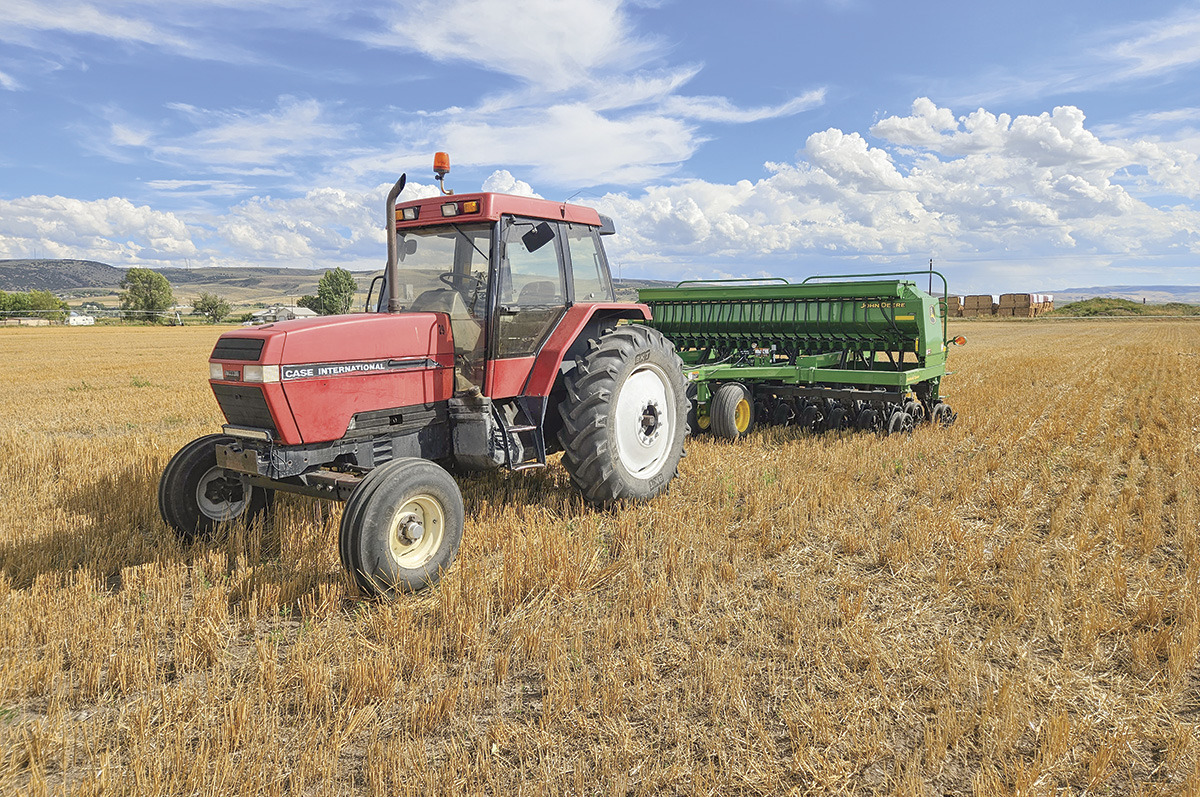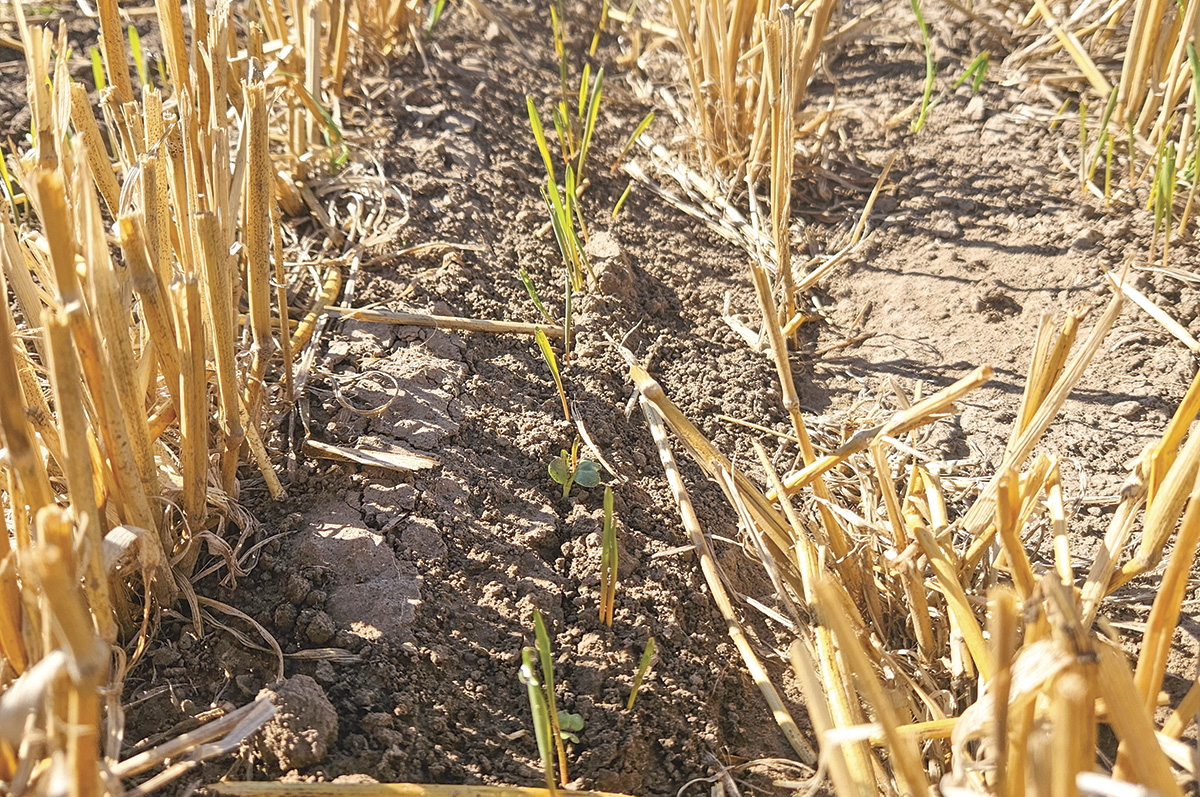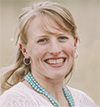“Everyone knows what these practices are. Many farmers are doing them already,” says Dr. Sanford Eigenbrode, professor of entomology at the University of Idaho (U of I) and a project lead for the Innovative Agriculture and Marketing Partnership (IAMP). “Others are thinking about it but haven’t made the step.”
The practices in question are those that fall under the “climate-smart” label, including cover cropping, prescribed grazing, reduced- or no-till practices, interseeding, precision fertilizer application and nitrogen fertilizer replacement. “[These practices] have been shown elsewhere to decrease greenhouse gas emissions during a growing season,” says Eigenbrode. “We want to know how they work in Idaho farms. We need validation to show that they work as well here as they seem to work in other places.”
He hopes the IAMP program, made possible by a $55 million USDA grant, will give Idaho farmers the incentive they need to adopt soil improvement and carbon sequestration practices. In turn, the data gleaned from their farms may help inform future programs.
IAMP at a glance
Although Eigenbrode is an entomologist, he has long been interested in agricultural systems as a whole. “All our farms are systems,” he says. IAMP’s breadth reflects this approach. Similar programs often focus on a single crop, but IAMP includes seven eligible commodities: barley, beef, chickpeas, hops, potatoes, sugarbeets and wheat.
To be eligible for incentive payments, an interested producer must apply at least one climate-smart practice in a field where it was not previously done. “Stacking” is encouraged to maximize benefits.
Producers who are already involved in the NRCS’s Environmental Quality Incentive Program (EQIP) may see similarities, says Devin Fielding, Shelley producer and Idaho Association of Soil Conservation Districts (IASCD) president. “Hopefully, this program will involve less red tape and yield more dollars per practice,” he says. “It is also more targeted.”

No-till farming practices will be eligible for incentives through the IAMP program. Photo by Devin Fielding.
Another distinction is that producers will enter into contracts with and receive payment from U of I’s partner agencies. These groups are IASCD, the Nez Perce and Coeur d’Alene Tribes, The Nature Conservancy and Desert Mountain Beef. Another partner, Arrowleaf Consulting, is focusing on finding special markets for climate-smart commodities.
IASCD is one example of a partner selected for its reach across the state and experience managing similar contracts. Even so, Fielding says, “It’s a big shift for us. It’s been several years since we’ve carried a program like this.”
With conservation districts typically administered out of the same building as the FSA and NRCS, Fielding anticipates that IAMP will fill a different niche from current options. “It’s another tool in the toolbox,” he says. “Hopefully, we’ll be able to have someone walk into the office, tell us what they want to do, and we’ll be able to send them in the right direction.”
Aligning various goals and approaches
The date for the program rollout is still undetermined, as the partner organizations are working to produce a uniform contract and streamline the process before opening it up to producers. “Making sure we get it right is something we want to prioritize over being fast,” says Tori O’Neal, a Lemhi County beef producer and IAMP project lead for Desert Mountain. “We don’t want to burn anyone on this.”
As a rancher co-op, Desert Mountain is unique among the operating partners. However, it has a history of working with farmers to integrate cover crops, interseeding and grazing in southwest Idaho. “It is good forage through the winter, and it provides the farmer with extra income and fertilizer,” explains O’Neal, referring to Desert Mountain’s promotion of these practices. On the ground, its goals dovetail nicely with IAMP’s.
The same is true of IASCD, says Fielding. “UI has specific goals, such as measuring carbon sequestration. We want to implement soil conservation practices on private ground. Those line up.”
Farmers, too, may adopt these practices – and find themselves eligible for IAMP – for reasons other than those the program enumerates. Fielding himself planted (and grazed) his first cover crop last fall: a triticale, radish and turnip mix no-tilled into wheat stubble. “Carbon sequestration has nothing to do with it. I want to make sure my sand doesn’t move,” he says.
Fielding’s next step is to incorporate the practice into his crop rotation. “I’m always looking for something different I can do,” he says. “I’m asking, ‘What’s the next thing to make everything work better together?’”

Shelley farmer Devin Fielding planted a triticale, radish and turnip mix into wheat stubble in fall 2023. Cover cropping and cover crop grazing are practices IAMP will incentivize for Idaho producers. Photo by Devin Fielding.
The research commitment
According to Eigenbrode, most of the grant money will be used for payments to farmers; however, research is also part of the goal. While intense data collection will be limited to UI's research stations, he says, “We will be taking some data from all farms.” He hopes the data will illuminate the extent to which climate-smart practices achieve conservation goals in Idaho agriculture. Researchers are also interested in profitability and system-wide complications (such as pest response) and are required to report aggregate data to the USDA.
“Another aspect of planning has been the need to protect the identity of farmers in the program,” says Eigenbrode. “We are working with human subjects, and they must be able to be involved without jeopardizing their privacy.”
Binding yet flexible contracts
As the program approaches rollout, logistics are clarifying. A producer will initially apply for the program through the IAMP website, at which stage he may indicate a preferred partner organization. After a sifting process, says O’Neal, “UI will get them set up with a partner for the second phase of the application. This is where the rubber meets the road. We’ll sit down with them and figure out what we want to do and make a plan.”
In this second phase, producers will commit to specific practices and, if relevant, set up grazing plans. If a crop-only farmer wants to integrate grazing, the program will allow him to designate a cattle owner or ask to be paired with another participant.
While the goal is to set up three-year contracts, “We are aiming to have flexibility that reflects changing conditions,” says O’Neal. “Say you signed up for a cover crop, but find out in August that your water is canceled. There are reasonable things that necessitate change.”
Eigenbrode anticipates the project evolving a bit over time. “Farmers are innovative, and they’re going to do innovative things,” he says. “In five years, with savvy, aggressive and active farmers, we’re going to learn some things.”


.jpg?t=1687979285&width=640)


.jpg?height=auto&t=1713304395&width=285)


